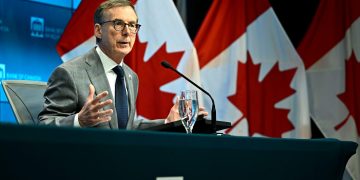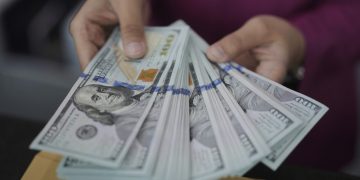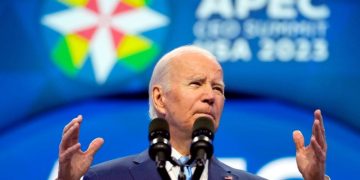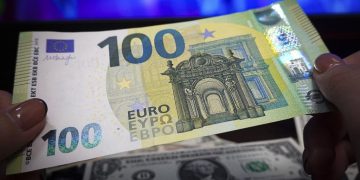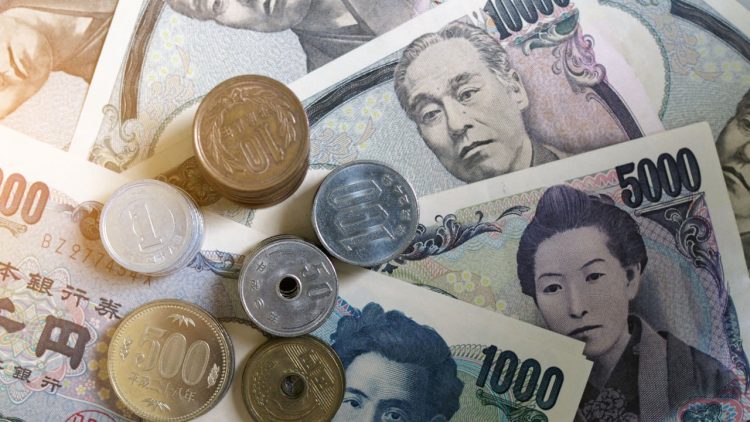Japan’s foreign exchange intervention has little effect 】 The Japanese authorities entered the “rescue market” at a heavy cost. According to data released by the Japanese Ministry of Finance, from April 26 to May 29, the total amount of foreign exchange intervention operations by the Japanese authorities was about 9.8 trillion yen, setting a new monthly record. This amount also exceeds the total foreign exchange intervention operation of about 9.2 trillion yen in the whole of 2022.
The Japanese authorities’ entrance into the “rescue” has been costly.
According to data released by the Japanese Ministry of Finance, from April 26 to May 29, the total amount of foreign exchange intervention operations by the Japanese authorities was about 9.8 trillion yen, setting a new monthly record. This amount also exceeds the total foreign exchange intervention operation of about 9.2 trillion yen in the whole of 2022.
The large-scale foreign exchange intervention operation highlights the attitude of the Japanese authorities to “defend the yen”. How effective is unprecedented foreign exchange intervention? From the trend of the yen exchange rate, foreign exchange intervention in the short term to stop the fall of the yen, but ultimately little effect.
The market is widely speculated that the Japanese authorities’ first entry into the “rescue” point occurred on April 29. On the same day, the yen fell below the 160 mark against the dollar, then quickly rebounded and rose to near 154.53. In subsequent sessions, the yen briefly strengthened to 151.85 against the dollar. But the yen’s decline did not stop there, and by Friday’s close, the yen had fallen below the 157 mark against the dollar, once again falling back to its lowest level since 1990.

Market analysts believe that the foreign exchange intervention of the Japanese authorities has slowed down the decline of the yen to some extent, but the foreign exchange intervention “treats the symptoms rather than the root cause” and cannot fundamentally reverse the depreciation trend of the yen.
“Foreign exchange intervention works in the short term, but not against the trend.” Zhang Meng, senior researcher at Industrial Research, said that the Japanese authorities intervened near the 160 level, strengthening the resistance to this level, and from this point of view, the foreign exchange intervention is effective. Looking ahead, there is limited room for the yen to depreciate, but the yen’s trend appreciation still requires a sharp fall in the US dollar exchange rate or a large-scale flight to safety driven by global funds.
Hu Jie, a professor of practice at Shanghai Advanced Institute of Finance, Shanghai Jiao Tong University, said that the fundamental factor driving the depreciation of the yen is still the interest rate difference between Japan and the United States, and the pressure on the depreciation of the yen will still exist when the interest rate maintains a large gap. Only when dollar interest rates start to fall or yen interest rates start to rise can this depreciation be fundamentally reversed. Hu Jie believes that in the future, the Japanese authorities may still intervene in foreign exchange to curb excessive speculative market behavior and control the speed of the depreciation of the yen.
With the rapid depreciation of the yen, its stimulative effect on the Japanese economy gradually fades.
Citic Securities research report said that the depreciation of the yen is not always good for the Japanese economy: the number of Japanese exports has not increased significantly due to the depreciation of the yen, and the rapid depreciation of the yen is not conducive to the repair of residents’ real income and purchasing power, and may reduce the international appeal of yen assets in the short term.
Against this backdrop, the weakness of the yen has become a major problem for the Bank of Japan. The Bank of Japan is facing a dilemma: on the one hand, the yen needs to be lifted by the BOJ; On the other hand, weak domestic consumption in Japan is also difficult to support a rapid rate hike.
For the follow-up monetary policy path of the Bank of Japan, Zhang Meng believes that the current Japanese economy is still on the brink of recession, and the Bank of Japan may raise interest rates again only if it sees significant growth in potential inflation and household inflation expectations. As for the pace of rate hikes, it is not expected to be continuous.

